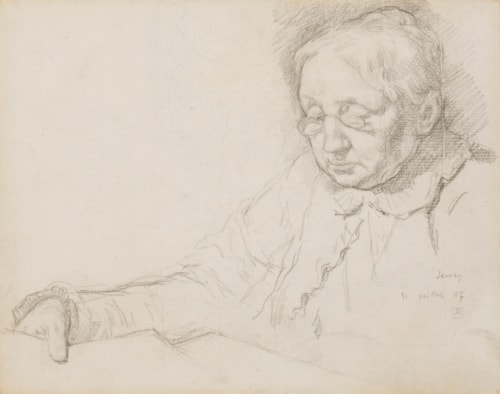
Théo van RYSSELBERGHE
Ghent 1862 - Saint-Clair 1926
Biography
A gifted painter and draughtsman, Theo van Rysselberghe studied at the Academy in his native Ghent and first exhibited his work in 1880 before completing his artistic training in Brussels, at the Académie Royale des Beaux-Arts, where he studied with Jean-François Portaels. He was a member of the Belgian artist’s society L’Essor and in 1883 was among the founder members of the more avant-garde group Les XX, who rejected academism and rebelled against the artistic standards of their time. It was through this artistic circle that Van Rysselberghe met such influential artists, including James Ensor, Fernand Khnopff and James McNeill Whistler.
A pivotal moment in Van Rysselberghe’s development as an artist came in 1886, at the eighth impressionist exhibition in Paris, where he encountered Georges Seurat’s monumental pointillist canvas A Sunday Afternoon on the Island of La Grande Jatte, painted between 1884 and 1886. This led Van Rysselberghe to experiment with the pointillist technique; and from 1886 onwards he was working in a Neo-Impressionist manner, becoming one of the leading exponents of pointillism in Belgium. In 1897 Van Rysselberghe left Brussels for Paris, where he worked on the anarchist journal Le Temps nouveaux, alongside other artists including Paul Signac, Maximilien Luce, Camille Pissarro and Kees Van Dongen. Regarded as the finest portrait painter among the Neo-Impressionists, he continued working in a pointillist manner until around 1907. Among his most significant later commissions was for an enormous painting to decorate a stair landing in the Hôtel Solvay on the Avenue Louise in Brussels, commissioned by the architect Victor Horta and completed and installed in 1902. A frequent visitor to the South of France, Van Rysselberghe settled permanently at Saint-Clair, near Le Lavandou, in 1911.



